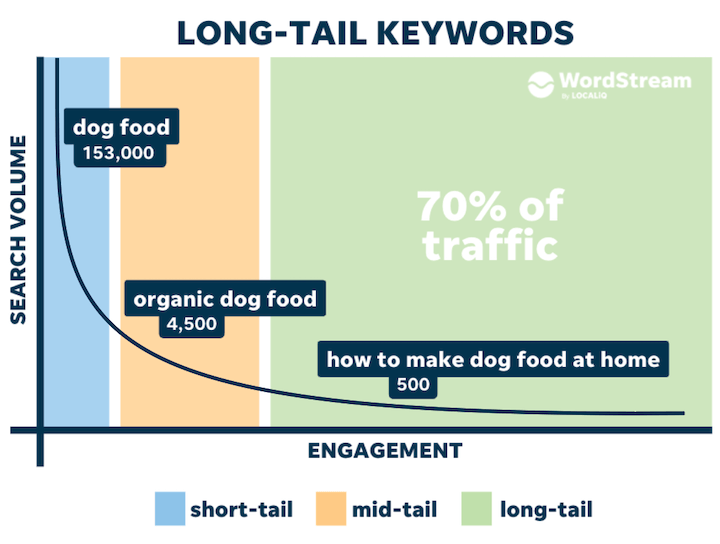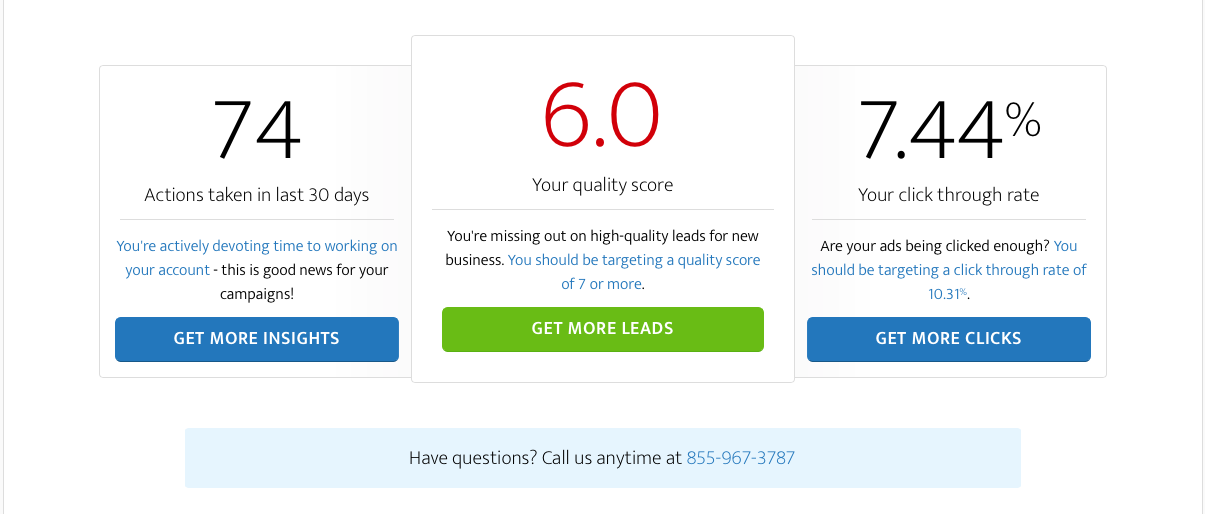
Home — Long-Tail Keyword Tool: Use Smart Keyword Tools to Profit from the Long Tail
Long-Tail Keyword Tool: Use Smart Keyword Tools to Profit from the Long Tail
Long-tail keywords produce higher conversion rates and a higher return on investment (ROI) than common keywords or head terms, but the trade-off is, they can be more difficult to find and manage. As noted in Search Engine Journal, the bottom 20% of searches, in terms of volume, generate 60% of conversions! This undeniably confirms the value of the long tail. Long-tail keywords are also less competitive, and therefore less costly to bid on in PPC.
But how do you find thousands upon thousands of long-tail keywords? How do you organize and group long-tail keywords into something actionable and usable in your search campaigns? There are only so many hours in a day, and how much of that can you devote to long-tail keyword research?
A long-tail keyword tool makes finding and capitalizing on long-tail keywords fast and painless, and WordStream’s keyword tools will also help you with basic keyword discovery, keyword grouping and more.
The Need for a Long-Tail Keyword Tool in Search Marketing
The long tail of search refers to the more specific but less frequent keyword searches that make up the majority of search engine queries. The long tail goes on indefinitely so that the sum of its searches far exceeds the volume of more common terms.
Put simply, forming a strategy to incorporate long-tail keywords into your search campaigns offers multiple benefits. For example, long-tail keywords result in:
- Better paid search results: Long-tail keywords tend to have less direct competition, which results in lower costs and a better click-through rate (CTR). In addition, the more specific and relevant your keyword is to the search query, the more likely your ad is to display.
- Better natural search results: Long-tail keywords provide you with a constant stream of ideas for relevant landing pages and content creation to help with your natural search efforts.
- Improved insight into the customer: You can use long-tail keywords to intuit new features or requests consumers are seeking. Longer terms encode much more information about the people who are finding your site through search engines.
Despite these benefits, most marketers neglect the long tail because of difficulty around execution. It’s just too darn hard! Manually managing a hundred or so keywords doesn’t seem too bad, but what do you do with thousands, hundreds of thousands or even millions of keywords?
Software Tools for Getting Started with Long-Tail Keywords
Since it’s impossible for an individual or even a group of people to brainstorm thousands of long-tail keywords, you have two options:
- Use broad match on the more obvious keywords: Although broad match is helpful for certain aspects of search, simply broad matching on well-known or more obvious (aka “head”) keywords results in greater keyword competition (and therefore higher prices and/or worse ad rankings), poorer relevancy and lower Quality Scores.
- Use WordStream’s Free Keyword Tool: You can get started with our free online keyword tool, which indexes over 1 billion keywords to provide the most accurate and comprehensive results of any free tool. We deliver thousands of keyword phrases including long-tail variations at no cost.
WordStream is your best option to start putting the long tail to work for your site and your business.
Long-Tail Keyword Tool Best Practices
Once you get started with WordStream, you can quickly analyze, group and act on your long-tail keywords. As your long-tail keyword database grows, you can iteratively expand and optimize your search marketing campaigns in the following ways:
- Reduce excessive reliance on broad matching: Having more specific keywords in your keyword lists will enable you to avoid (or bid less on) the more expensive, highly competitive and potentially less relevant “head” terms, while focusing on the more specific keyword segmentations that are conversion-friendly and most relevant to your business.
- Segment and sub-segment relevant keyword groupings: By breaking up more general groupings of keywords into multiple, more specific keyword groupings, you can author more specific ads and landing pages which speak more directly to the original intent of the searcher. This also improves your Quality Score.
- Leverage the long tail to discover negative keywords: Don’t assume that all long-tail keywords are relevant to your business! Learn how to discover and set negative keywords that will reduce irrelevant clicks and impressions.
Long-tail keyword tools from WordStream enable the search marketer to enact a more selective and sophisticated approach to conversion rate optimization and generating greater ROI from search marketing campaigns.
Get Yourself Graded on Long-Tail Keywords
Wordstream’s Google Ads Performance Grader is a comprehensive free tool that analyzes your Google Ads campaigns and evaluates your performance on indicators such as long-tail keywords.
The Google Ads Performance Grader shows you where and how to make improvements to your AdWords campaign that will boost your performance, develop your long-tail keywords, and save you money.
WordStream: Your Long-Tail Keyword Tool Solution
Long-tail keywords play a vital part in informing and optimizing both paid and natural search marketing strategies, yet unfortunately for many marketers, the benefits of pursuing a long-tail search marketing strategy are outweighed by the added time and complexity required to organize and act on substantially longer keyword lists.


